 by "ttyymmnn" (ttyymmnn)
by "ttyymmnn" (ttyymmnn)
Published 06/23/2017 at 12:35
 by "ttyymmnn" (ttyymmnn)
by "ttyymmnn" (ttyymmnn)
Published 06/23/2017 at 12:35
Tags: Planelopnik
; planelopnik history
STARS: 8
Welcome to This Date in Aviation History , getting you caught up on milestones, important historical events and people in aviation from June 21 through June 23.
!!! UNKNOWN CONTENT TYPE !!!
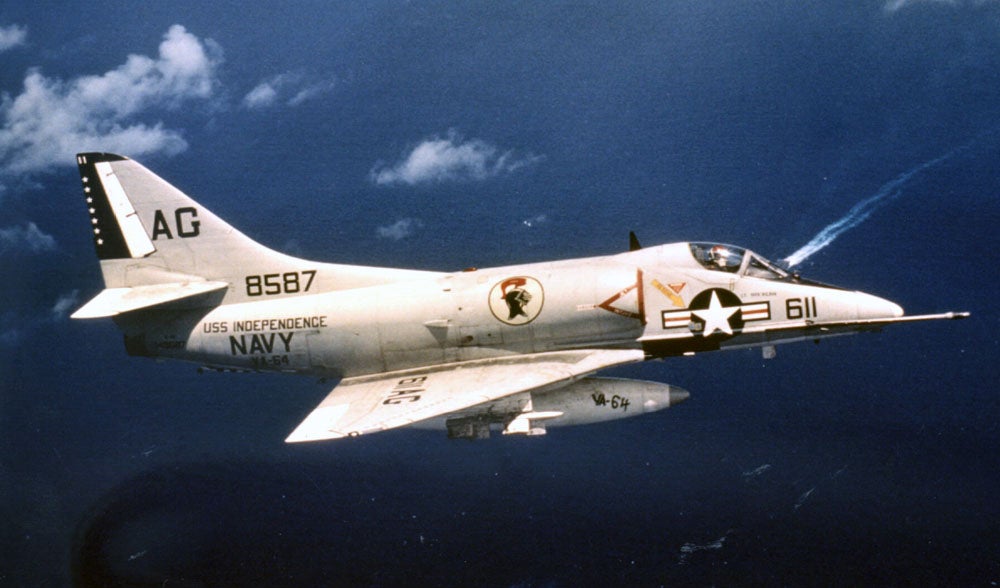
June 22, 1954 – The first flight of the Douglas A-4 Skyhawk. The 1950s was a period of transition for military aviation, as new jet-powered aircraft began to take the place of older, propeller-driven aircraft in large numbers. Douglas had already provided the US Navy and US Marine Corps with a large number of bombers, fighters, and naval attack aircraft aircraft during WWII, and they followed those up with the remarkable piston-engine attack plane, the A1D Skyraider , which came too late to see service in the war but served with distinction in Korea and Vietnam. Best known as a hard-hitting and rugged ground attack aircraft, the AD-4B variant of the Skyraider was modified to carry nuclear weapons, but the Navy requested a jet-powered aircraft to take its place. Bucking the trend towards larger and larger aircraft at the time, Douglas engineer Ed Heinemann designed a diminutive, delta-wing fighter powered by a single jet engine. In fact, the A-4 was so small that its wings did not need to be folded for carrier storage, and the final aircraft weighed half of what the Navy specified for the new airplane, and even less than the Skyraider it replaced. But with a powerful jet engine in such a small airframe, the Skyhawk was a favorite among its pilots for its speed and performance, earning it the nicknames Heinemann’s Hot Rod , Bantam Bomber , Mighty Mite and Scooter .
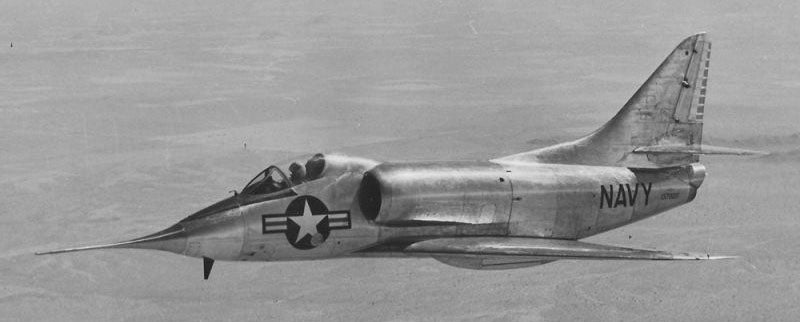
The first A-4s were powered by a Wright J65 turbojet , but starting with the A-4E, Douglas moved to a Pratt & Whitney J52 turbojet that gave the little fighter a top speed of 670 mph. And though it was small, the Skyhawk packed a heavy punch. In addition to its two 20mm cannons, the A-4 could carry nearly 10,000 pounds of external bombs, a greater bomb load than a WWII-era Boeing B-17 Flying Fortress . The Skyhawk also pioneered the concept of “buddy refueling,” where one aircraft could refuel another of the same type in flight, removing the need for dedicated tanker aircraft. Following delivery to the Navy and Marine Corps in 1956, the A-4 first saw combat with the Navy during the Vietnam War, launching air raids on North Vietnam in August 1964. Skyhawks also found distinction with the Israeli Air Force in the Yom Kippur War and with the Argentine Air Force during the Falklands War . Other international customers included Kuwait, Australia, New Zealand, Indonesia, Malaysia, and Brazil.
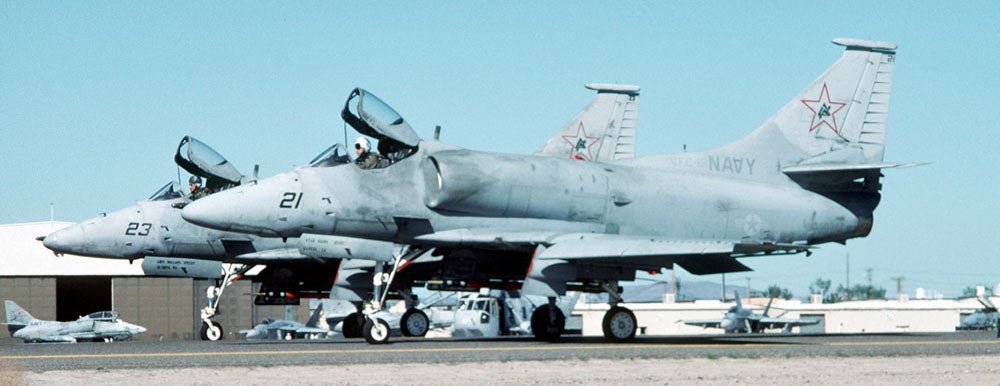
After the Skyhawk was retired from US Navy fleet duty, it found a new lease on life as an adversary aircraft at the Navy’s Fighter Weapons School (commonly called Top Gun). The A-4 was chosen as the aggressor aircraft because of its small size, maneuverability and smokeless trail, similar to a MiG-17 , and it served in this role until 1999. In 1974, the the Navy’s Blue Angels demonstration squadron chose the Skyhawk as their new demonstration aircraft when they transitioned from the McDonnell Douglas F-4 Phantom II , a plane that was much larger and more costly to operate. The smaller and lighter aircraft, with a tighter turning radius, allowed for a more dynamic flight demonstration, and the Blues flew the Skyhawk until 1986. The A-4 had a remarkable production run of 25 years, and Douglas turned out nearly 3,000 aircraft. The US Navy retired the last of its operational A-4s in 2003, but it served with the Israeli Air Force until 2015, and still remains in service in a handful of export countries. (US Navy photos)
!!! UNKNOWN CONTENT TYPE !!!
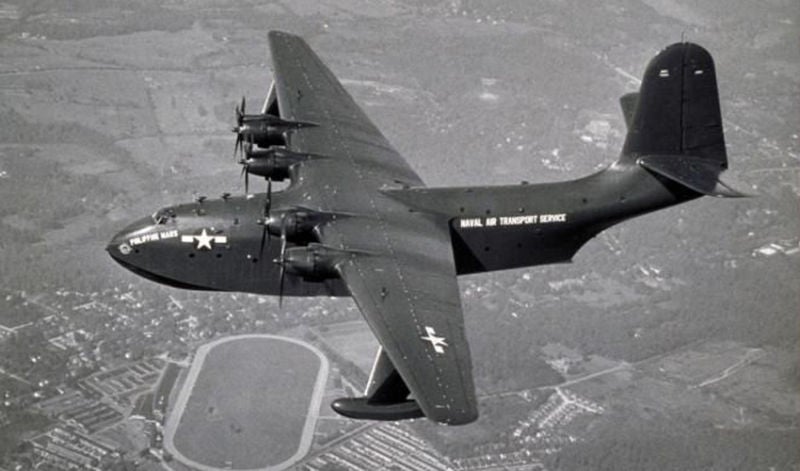
June 23, 1942 – The first flight of the Martin JRM Mars. Today, huge, modern airliners operate from airports the world over, but in the earlier days of aviation, particularly the Golden Age of the 1930s, the world’s largest operational aircraft were flying boats. With 71-percent of the Earth’s surface covered by water, flying boats became the preferred way to transport large numbers of people and cargo, with the added safety factor of being able to land just about anywhere on their routes. But by WWII, the large flying boat was being supplanted by larger land-based planes, and the age of the flying boat reached its zenith with the huge Martin JRM Mars, the largest flying boat produced for the Allies during the war. Based the Mars on their PBM Mariner , a large two-engined flying boat patrol bomber that first flew in 1939, the Mars was originally conceived as a long-range ocean patrol bomber. For the Mars, Martin used four more powerful Wright R-3350 Duplex Cyclone 18-cylinder radial engines, and then scaled up the Mariner by adding 82 feet to its wingspan and 38 feet to its length, giving the Mars a wingspan of 200 feet. Though the Mars was conceived as a bomber, by the time it was ready for US Navy service the role of the maritime bomber was no longer needed, so the Navy ordered 20 aircraft to be converted as a strategic transport and cargo aircraft. In that role, the cavernous fuselage could accommodate 133 troops, 84 patients along with 25 medical attendants, or up to 32,000 pounds of cargo. With a cruising speed of 221 mph, the Mars had an unrefueled range of nearly 5,000 miles. The first aircraft weren’t delivered until June 1945 and, with the end of the war in sight, the Navy cut their original order of 20 aircraft to just those that were under construction at the time. The first pre-production aircraft, named Hawaii Mars , was lost in a crash in the Chesapeake Bay, leaving a total of only 5, all named after Pacific Ocean locales from the war: the Marianas Mars , Philippine Mars , Marshall Mars , Caroline Mars , and a second Hawaii Mars . The Navy used the aircraft to fly cargo from the US to Hawaii and other islands in the Pacific, and the Caroline Mars , which had been upgraded with more powerful Pratt & Whitney R-4360 Wasp Major 28-cylinder engines, set a world record for passenger load in 1950 when it carried 269 passengers from San Diego to Alameda. Engines fires dogged the development of the Mars, and the Marshall Mars was lost in 1950 following an engine fire that destroyed the plane, leaving only 4 aircraft.

By 1959, the Navy was done with the giant flying boats, and they planned to sell the remaining aircraft for scrap. However, the giant planes got a new lease on life when they were purchased by a consortium of Canadian foresters to be converted to firefighting water bombers. Water tanks and pick up scoops were added which allowed 30 tons of water to be taken onboard on just 22 seconds. But fate kept chipping away at the Mars, and the
Marianas Mars
was lost in a fatal crash in 1961, and the
Caroline Mars
fell victim to
Typhoon Freda
in 1962. That left just 2 aircraft. In 2012, the owners of the aircraft,
Coulson Flying Tankers
, announced that
Philippine Mars
would be retired, restored to US Navy livery, and flown to the National Naval Aviation Museum in Florida. The
Hawaii Mars
remains in firefighting service, though its use is limited.
(US Navy photo; photo by Alex Juorio via
Wikimedia Commons
)
!!! UNKNOWN CONTENT TYPE !!!
!!! UNKNOWN CONTENT TYPE !!!
!!! UNKNOWN CONTENT TYPE !!!
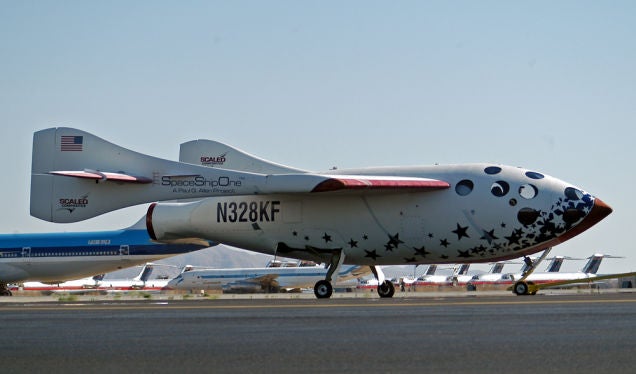
June 21, 2004 – SpaceShipOne makes the first privately-funded human spaceflight. SpaceShipOne is an experimental air-launched spacecraft powered by a rocket that is capable of taking the ship into suborbital flight. Designed by Burt Rutan and built by his company Scaled Composites , SpaceShipOne was the first step in a program to take paying passengers into space, and served as proof-of-concept for the larger SpaceShipTwo which first flew in 2010. Both ships use a unique feathering system that raises the aircraft’s tail boom to slow the ship during reentry. SpaceShipOne was launched from the Scaled Composites White Knight mothership, and the system won the $10 million Ansari X Prize in 2004 by reaching an altitude of 100 km twice within a two-week period. SpaceShipOne made 17 test flights, three of which went beyond 100 km in altitude, and the hybrid aircraft/spacecraft is now preserved at the National Air and Space Museum in Washington, DC. (Photo by WPPilot via Wikimedia Commons )
!!! UNKNOWN CONTENT TYPE !!!
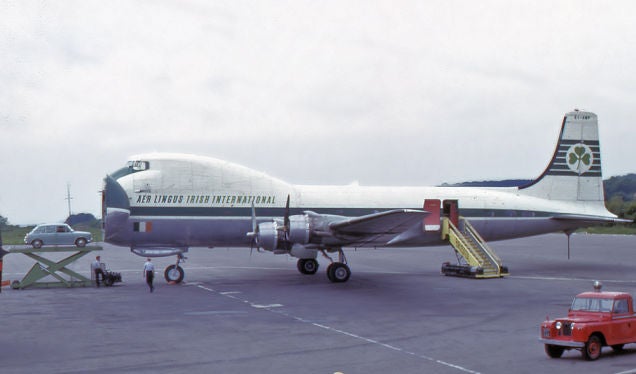
June 21, 1961 – The first flight of the Aviation Traders Carvair,
an aircraft developed from the
Douglas DC-4
by entrepreneur
Freddie Laker
to allow travelers to take their cars with them on holiday. The DC-4 was modified by placing the flight deck in a raised section above the main fuselage, which provided room for 5 cars and 22 passengers, or 3 cars and 50 passengers. The flexible design of the Carvair meant that the configuration could be changed on the ground between flights in as little as 40 minutes. A total of 21 DC-4s were converted and flown by various airlines in Europe, and one remains in service, based in Denton, Texas, which set a world record in 2005 when it carried 80 skydivers aloft.
(Public domain photo)
!!! UNKNOWN CONTENT TYPE !!!
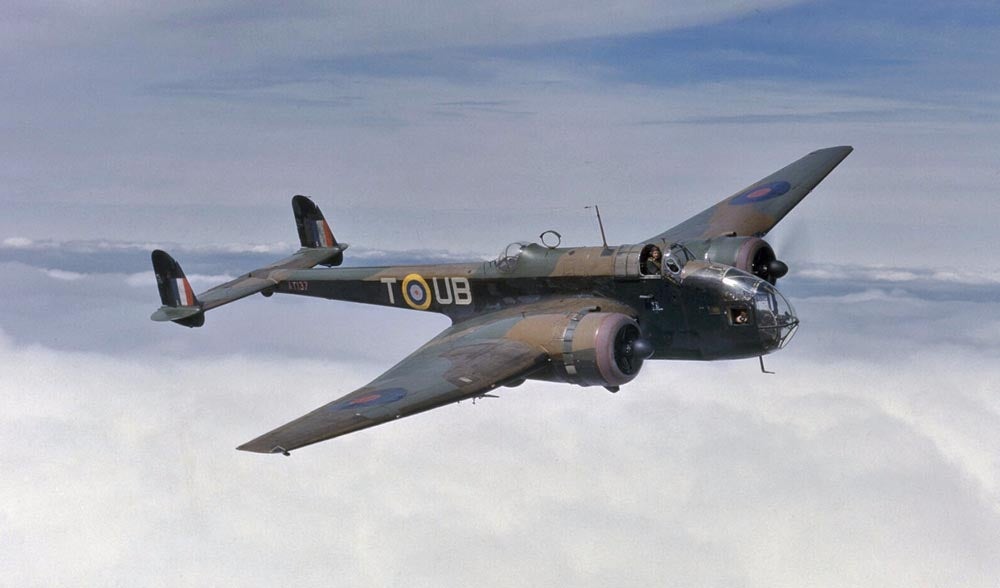
June 21, 1936 – The first flight of the Handley Page Hampden, a twin-engine medium bomber flown by the Royal Air Force in the early part of WWII. The Hampden entered service with two other early bombers, the Armstrong Whitworth Whitley and Vickers Wellington , though it would be the first of the trio to be retired. The Hampden was known as the “flying suitcase” by its crews due to its cramped fuselage, and it carried out the majority of the bombing missions early in the war, and took part in the so-called “ 1000 Bomber Raids ” against Germany. Though considered modern when it was first built, the Hampden was quickly outclassed by newer designs, and was briefly relegated to night fighter duties before being retired in 1943. A total of 1.430 were produced from 1936-1941. (Royal Air Force photo)
!!! UNKNOWN CONTENT TYPE !!!
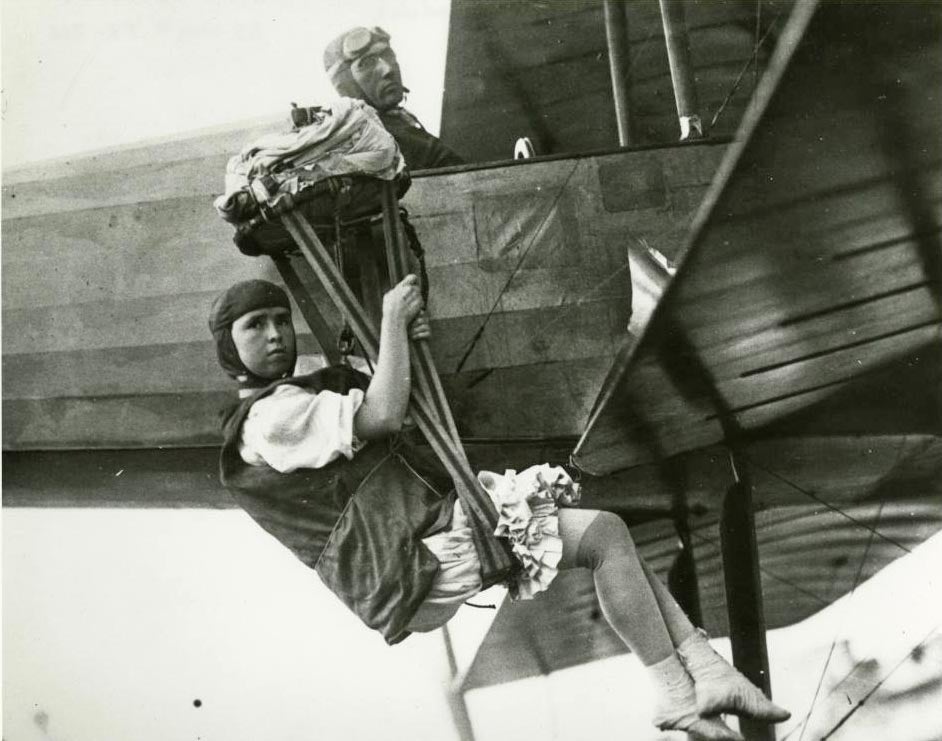
June 21, 1913 – Georgia “Tiny” Broadwick becomes the first woman to parachute from an airplane.
Tiny Broadwick (neé Thompson), so named because of her small stature and 85-pound weight, was the adopted daughter of pioneering parachutist and showman
Charles Broadwick
who joined Broadwick’s troupe of aerial performers at the age of 15. Billed as the “Doll Girl,” Tiny took up parachuting from balloons before making her first jump from an airplane piloted by
Glenn L. Martin
. Though June 21 is recognized as the date of her first jump, she had made two prior jumps during a flight exhibition in Chicago the previous year. While demonstrating a static line jump for the US Army, Broadwick’s line got tangled in the aircraft and she had to cut herself free. Later jumps were made without a static line, making her the first person to perform a free-fall parachute jump. Broadwick retired in 1922 after making 1,100 jumps, and died in 1978.
(National Air and Space Museum photo)
!!! UNKNOWN CONTENT TYPE !!!

June 22, 1984 – The first flight of the Rutan Voyager, the first aircraft capable of flying around the world without refueling. The idea to build the world-spanning aircraft was initiated by pilots Jeana Yeager and Dick Rutan , along with famed aeronautical engineer Burt Rutan , and the aircraft was built by Burt Rutan’s company Scaled Composites . The Voyager airframe was constructed of fiberglass, carbon fiber and Kevlar, weighed just 939 pounds empty (without engines or fuel, which brought the weight to 9,700 pounds), and was powered by a pair of Lycoming engines in a push-pull configuration. Yeager and Dick Rutan departed from Edwards Air Force Base in California on December 14, 1986 and completed the circumnavigation on December 23, flying 26,366 miles and setting a flight endurance record of just over 9 days. The Voyager is now on display at the Smithsonian Air and Space Museum in Washington, DC. (NASA photo)
!!! UNKNOWN CONTENT TYPE !!!
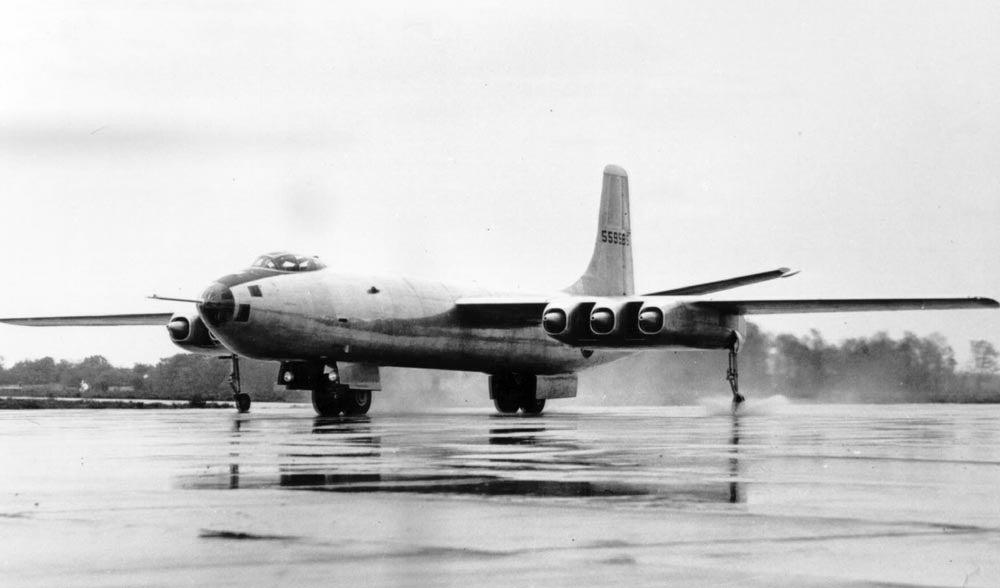
June 22, 1947 – The first flight of the Martin XB-48,
a six-engined straight-winged bomber that was developed alongside the swept-wing
Boeing B-47 Stratojet
as a fallback should the Boeing bomber not be successful. Displaying its design lineage with the piston-powered
Martin B-26 Marauder
, the XB-48 was the first jet bomber to employ a bicycle undercarriage with outriggers on the wings that had been tested on a modified B-26. Along with the B-47, the XB-48 competed with the
North American XB-45 Tornado
,
Convair XB-46
, with only the Tornado selected for limited production. On its maiden flight, pilot Paul Tibbs burst all four tires under heavy braking, though no injuries resulted from the accident. Only 2 XB-48s were built before the program was canceled in 1948.
(US Air Force photo)
!!! UNKNOWN CONTENT TYPE !!!
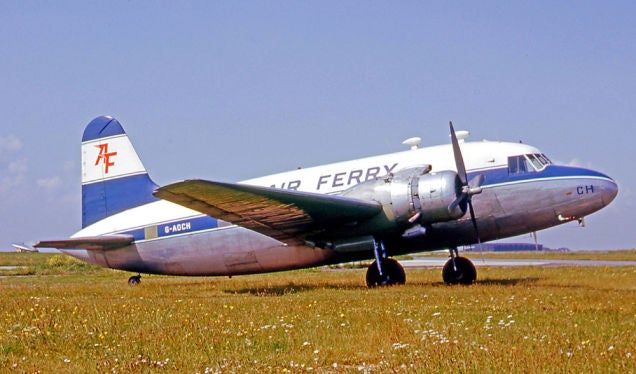
June 22, 1945 – The first flight of the Vickers VC.1 Viking, a twin-engine airliner developed from the Vickers Wellington bomber. Following WWII, Britain worked to create a civilian airline service after focusing almost solely on military aircraft production during the war. The Viking used the wing and undercarriage of the Wellington, but the fuselage was entirely new and designed to carry 21 passengers. The airliner was introduced in 1946, and British European Airways (BEA) operated the Viking for 8 years before it was replaced by more modern pressurized airliners. One Viking was modified by the addition of two Rolls-Royce Nene turbojets, becoming the world’s first purely jet-powered airliner when it flew in 1948. A total of 163 Vikings were built. (Photo by RuthAS via Wikimedia Commons )
!!! UNKNOWN CONTENT TYPE !!!

June 22, 1906 – The birth of Anne Morrow Lindbergh,
the wife of famed aviator
Charles Lindbergh
and an accomplished aviator herself. She became the first American woman to earn a glider pilot’s license in 1930 and, with her husband, she explored and charted intercontinental air routes, for which she was awarded the
Hubbard Medal
by the National Geographic Society and the US Flag Association Cross of Honor. The mapping trip covered 40,000 miles of flying and included visits to 5 continents. Lindbergh was inducted into the
National Aviation Hall of Fame
in 1979, as well as the International Women in Aviation Pioneer Hall of Fame. She died in 2001 at the age of 94.
(Photo via San Diego Air and Space Museum)
!!! UNKNOWN CONTENT TYPE !!!
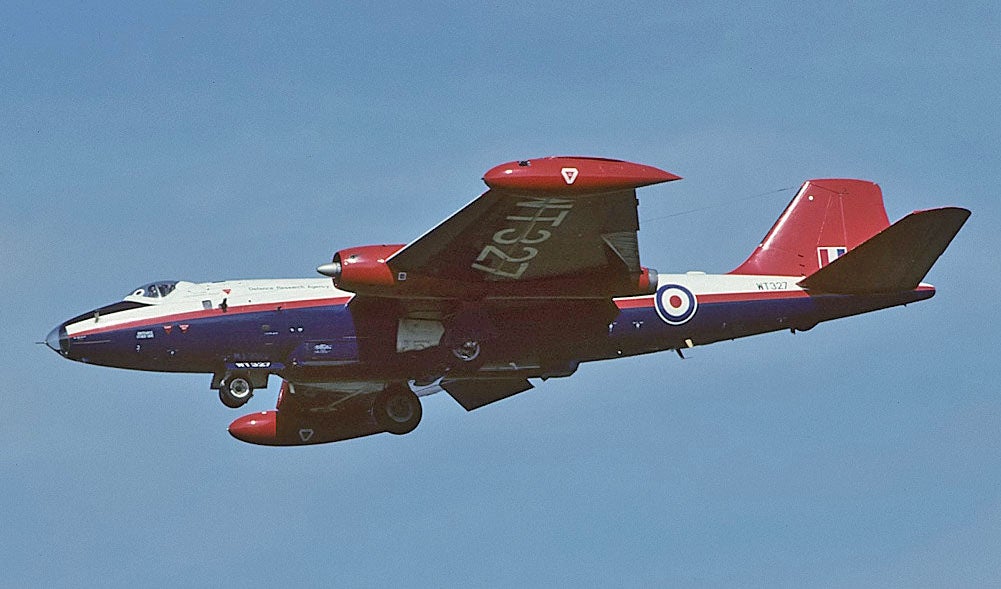
June 23, 2006 – The RAF retires the English Electric Canberra.
Originally conceived as a jet-powered successor to the
de Havilland Mosquito
, the Canberra was one of the most successful of the early jet bombers of the 1950s. It was capable of flying higher than most fighters when it was introduced, and was an important part of England’s early nuclear strike force. The Canberra proved to be remarkably adaptable to different missions, and its retirement marked the end of more than 50 years of RAF service. The Canberra was also built under license in the US as the
Martin B-57 Canberra
, and it became the first American jet-powered bomber to drop bombs in battle during the Korean War. Three of the Martin-built aircraft remain in service with NASA, carrying out high-altitude research.
(Photo by Mike Freer via
Wikimedia Commons
)
!!! UNKNOWN CONTENT TYPE !!!
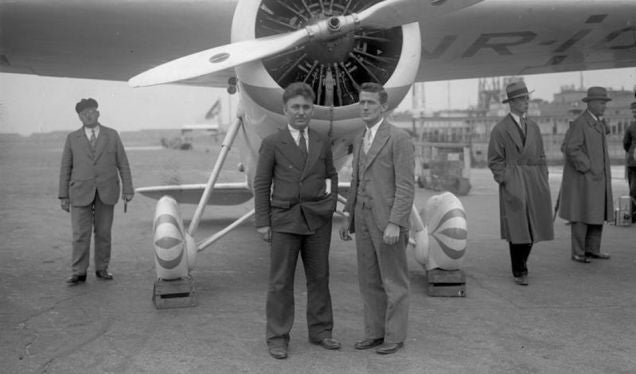
June 23, 1931 – Wiley Post and Harold Gatty take off on a flight around the world.
While others had flown fixed wing aircraft around the world before, the record for the shortest flight was held by the airship
Graf Zeppelin
, which completed the journey in 21 days in 1929.
Post
, with
Gatty
acting as navigator, departed from Roosevelt Field on Long Island flying a
Lockheed Vega
named
Winnie Mae
and headed eastward. They completed the flight on July 1 after traveling 15,474 miles in a record time of 8-and-a-half days. They were hailed as heroes in the US, and received a ticker tape parade in New York City. Post wrote a chronicle of their journey titled
Around the World in Eight Days
.
(Photo of Post and Gatty in Germany via Deutsches Bundesarchiv)
!!! UNKNOWN CONTENT TYPE !!!
!!! UNKNOWN CONTENT TYPE !!!
!!! UNKNOWN CONTENT TYPE !!!
!!! UNKNOWN CONTENT TYPE !!!
!!! UNKNOWN CONTENT TYPE !!!
!!! UNKNOWN CONTENT TYPE !!!
!!! UNKNOWN CONTENT TYPE !!!
If you enjoy these Aviation History posts, please let me know in the comments. And if you missed any of the past articles, you can find them all at Planelopnik History . You can also find more stories about aviation and aviators at Wingspan and Planes You’ve (Probably) Never Heard Of .
!!! UNKNOWN CONTENT TYPE !!!
 "HammerheadFistpunch" (hammerheadfistpunch)
"HammerheadFistpunch" (hammerheadfistpunch)
06/23/2017 at 13:06, STARS: 0
I think the weight on the Voyager is wrong. I see it listed at 2250 lbs dry. I guess maybe just the airframe sans engines? The engines alone weigh nearly 450 lbs.
Still. something with 2 engines that weighs just over a ton without fuel is pretty staggering.
EDIT: yeah, just the airframe.
 "ttyymmnn" (ttyymmnn)
"ttyymmnn" (ttyymmnn)
06/23/2017 at 14:06, STARS: 0
Thanks. I clarified that.
 "Rusty Vandura - www.tinyurl.com/keepoppo" (rustyvandura)
"Rusty Vandura - www.tinyurl.com/keepoppo" (rustyvandura)
06/23/2017 at 18:17, STARS: 1
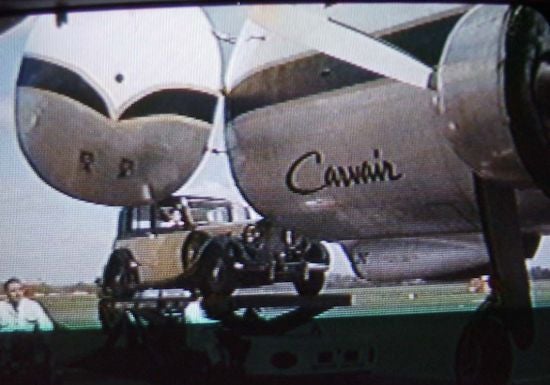
 "X37.9XXS" (x379xxs)
"X37.9XXS" (x379xxs)
06/24/2017 at 10:43, STARS: 0
No, Dorque, I expect you to die